Table of contents
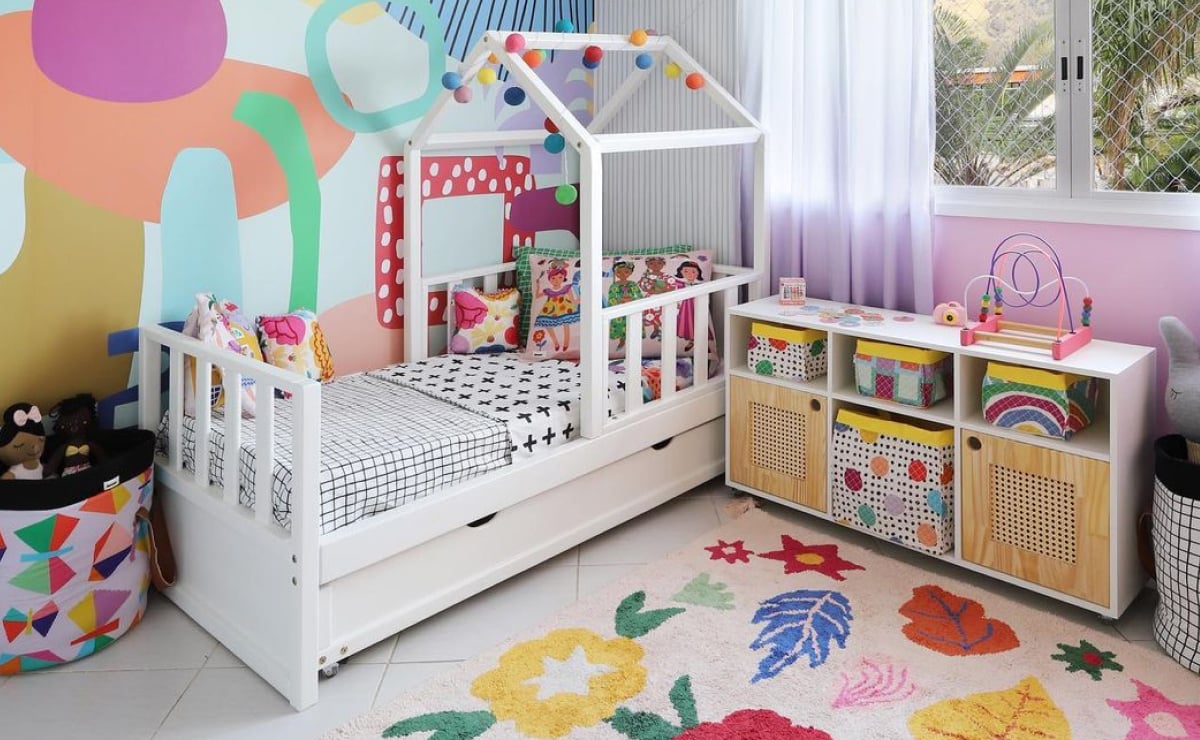
Around 1907, the Italian physician and educator Maria Montessori created the educational method that bears her name. One of the first women to graduate in medicine at the beginning of the 20th century, her studies were initially intended to facilitate the learning of mentally handicapped children. But as an educator, she also realized that she could use her pedagogical knowledge tomoving beyond psychiatry.
It was while working at the Casa dei Bambini, a suburban school in Rome's Lorenzo neighborhood, that she was finally able to put her theories into practice and thus perfect her method of self-education, which proved to be effective for the development of each and every child, and expanded beyond schools into all environments where it could be applicable.
See_also: How to make a half-moon rug for a more charming homeIncreasingly sought after by parents and schools, the teaching system is effective in stimulating learning. At home, the child's room, based on this method, stimulates initiative, autonomy, and independence in a safe way: the child uses his natural curiosity, always keen, to explore the limits of the room, of his own little corner.
According to interior designer Taciana Leme, when applied at home, the method consists of an environment designed for the child, "where all furniture dimensions respect their ergonomics. Besides the room looking like a miniature world and making the environment enchanting, there is also the behavioral side.Everything in their room stimulates discovery and, as a consequence, self-education," says the psychologist.
In a Montessori room, everything serves as a sensory stimulant for the child, so that all objects and toys are arranged and organized in the most favorable way for the discovery and learning process, without the intrusion of an adult.
According to Taciana, "the development happens through the interaction with the world in which the child lives": "Everything must be at a height that the child can pick up, spaces to paint, free areas to play. The child feels stimulated and develops through playing", says the designer. Dr. Reinaldo also believes that the benefits are even greater: "the development of autonomy will make this child feel more independent.But it goes further, by stimulating their creative process, their organization, and their spirit of collaboration. Children who grow up in this environment are less subject to the traumas of learning by imposition, awakening the pleasure in studying".
What elements are essential in a Montessori room?
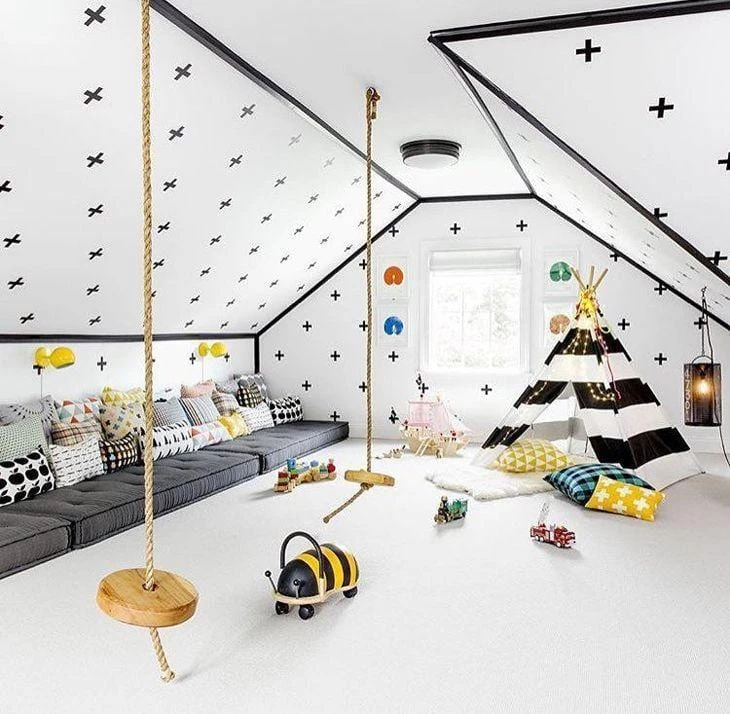
According to the designer, the absence of a cradle - replaced by a low bed or mattress on the floor - is the main characteristic of the room, besides more free spaces, few pieces of furniture and at the children's height. Safe and stimulating colors and shapes are also part of this environment.
It is worth noting that all things should be, as much as possible, at the child's height, such as "a closet that has a low part with some clothes and shoes that the child can pick up."
Today the children's furniture market also offers tables and chairs specifically for children. "Low furniture is perfect for storing toys, books, and magazines, as well as colorful mobiles that can be touched. Gambiaras of lights give an extra charm", says Taciana.
It's worth investing in rugs to stimulate touch, always remembering to delimit the play area. "Spread mirrors and pictures of family members at eye level, so they can identify themselves and the different people," says the designer.
Safety is key
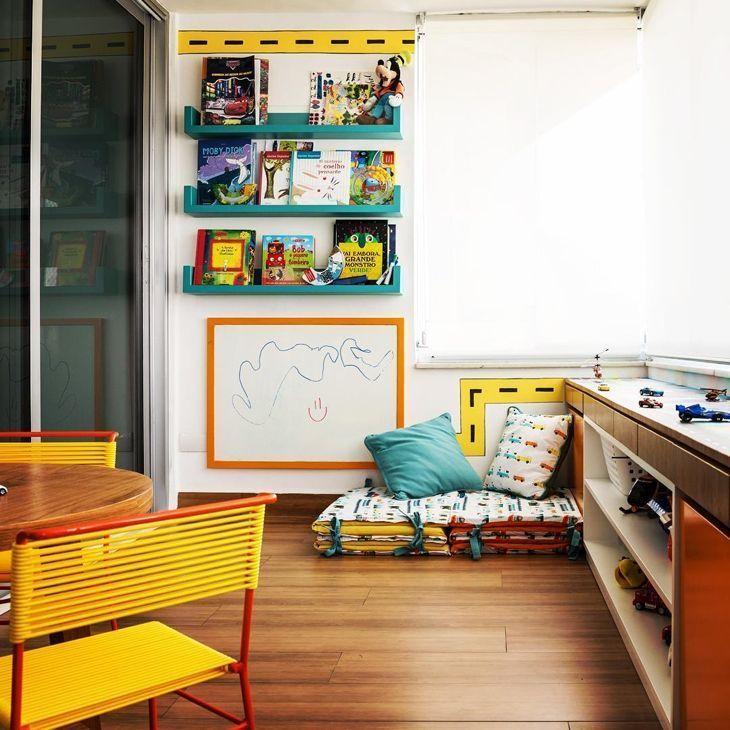
The room needs to look beautiful and, of course, safe - for the best development of the child. Therefore, the space must allow mobility and experiences safely. Check out the interior designer's tips:
See_also: Luccas Neto's party: 45 ideas to liven up the little ones' birthday- Avoid furniture with sharp edges;
- Leave the outlets in strategic places, behind furniture or covered;
- Check the stability of the furniture before you buy it;
- Mirrors and glass should be replaced with acrylic;
- Install bars to facilitate the process of walking safely;
- Choose a floor that is suitable for falls. If not, invest in a rubber mat or tatami. Besides being safety items, they are also decorative.
45 Montessori decorated bedroom ideas
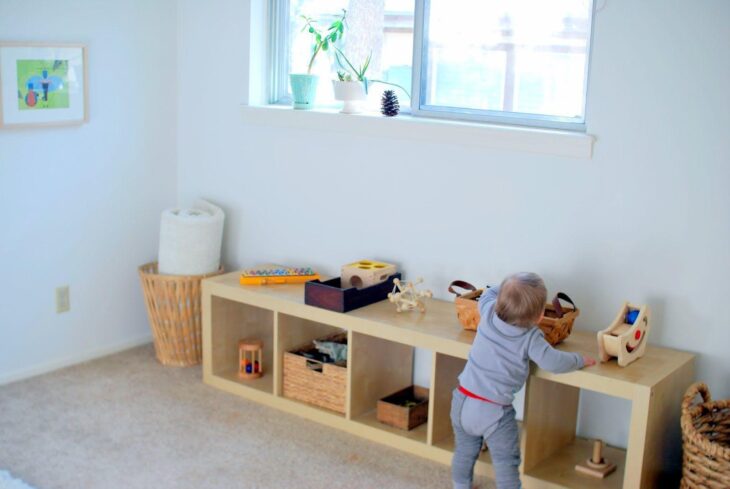
According to Dr. Reinaldo, Maria Montessori was based on child development based on the fact that the child between 0 and 6 years old naturally absorbs everything that surrounds him. She classified the "sensitive periods" in this way:
- The period of movement: from birth to one year of age;
- The language period: from birth to 6 years;
- The small objects period: from 1 to 4 years;
- The period of courtesy, good manners, the senses, music, and social life: from 2 to 6 years;
- The order period: from 2 to 4 years;
- The writing period: from 3 to 4 years old;
- The hygiene/defecation period: from 18 months to 3 years;
- The reading period: from 3 to 5 years old;
- The period of spatial relations and mathematics: from 4 to 6 years old;
"When the adult is aware that the greatest limitation is in him, and not in the child, he lovingly assists this process with respect for each phase, thus facilitating the right time for the full development of his abilities," says Dr. Reinaldo. With all this information, now all that's missing is inspiration to build your little one's room. So, check out our suggestions and make it look great:
1. candy colors always make the environment more charming
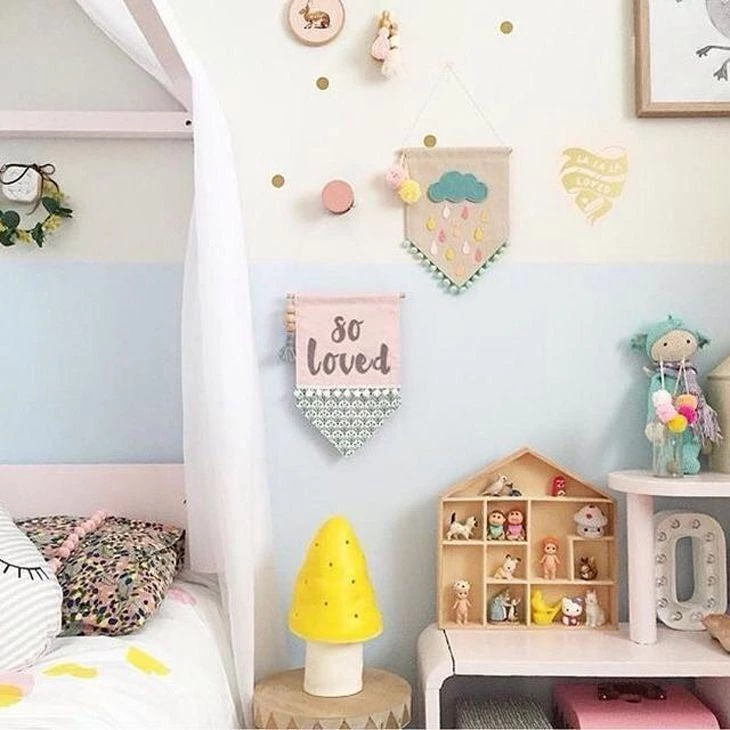
2. here, the use of red and blue predominates

3. two siblings can share a Montessori space
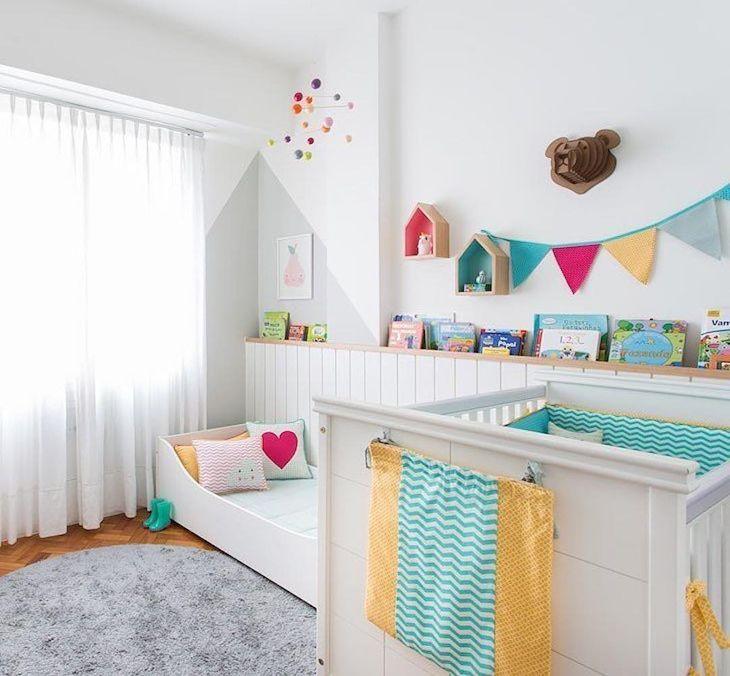
4. the room has many objects that attract the children's attention
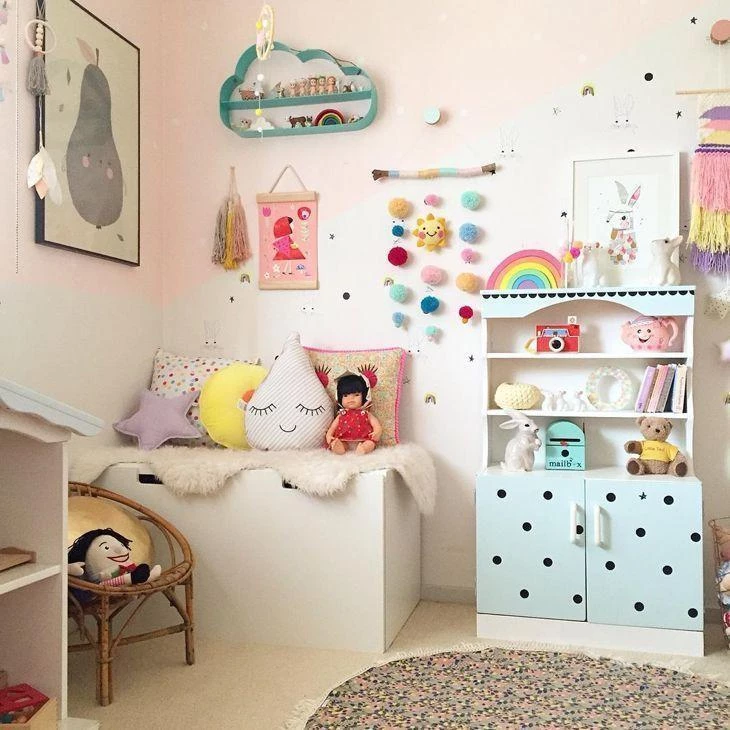
5. use low shelves, to facilitate access to books and encourage reading
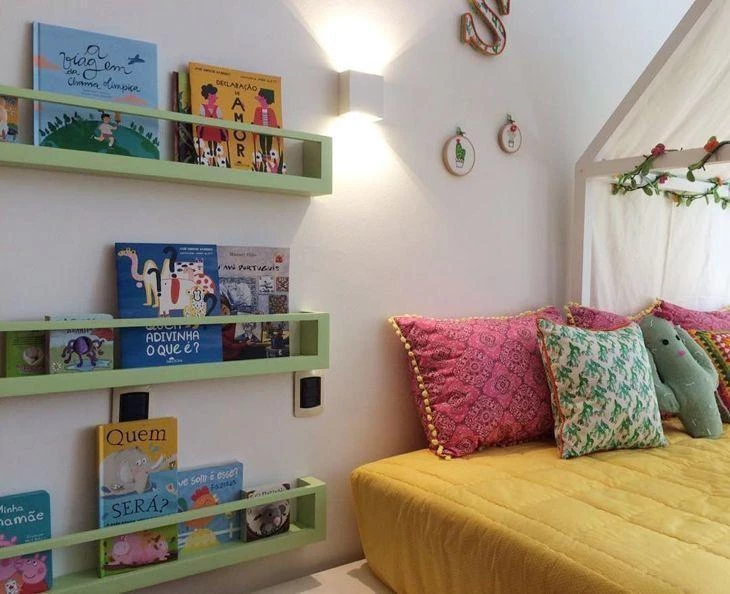
6. the mirror is a fundamental piece
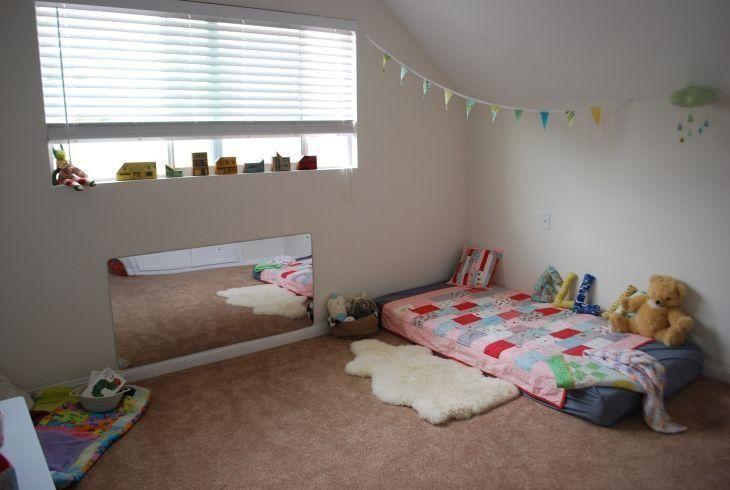
7. the use of wallpaper made the room even more playful

8. leave some clothes at the child's disposal so he can choose which one he prefers
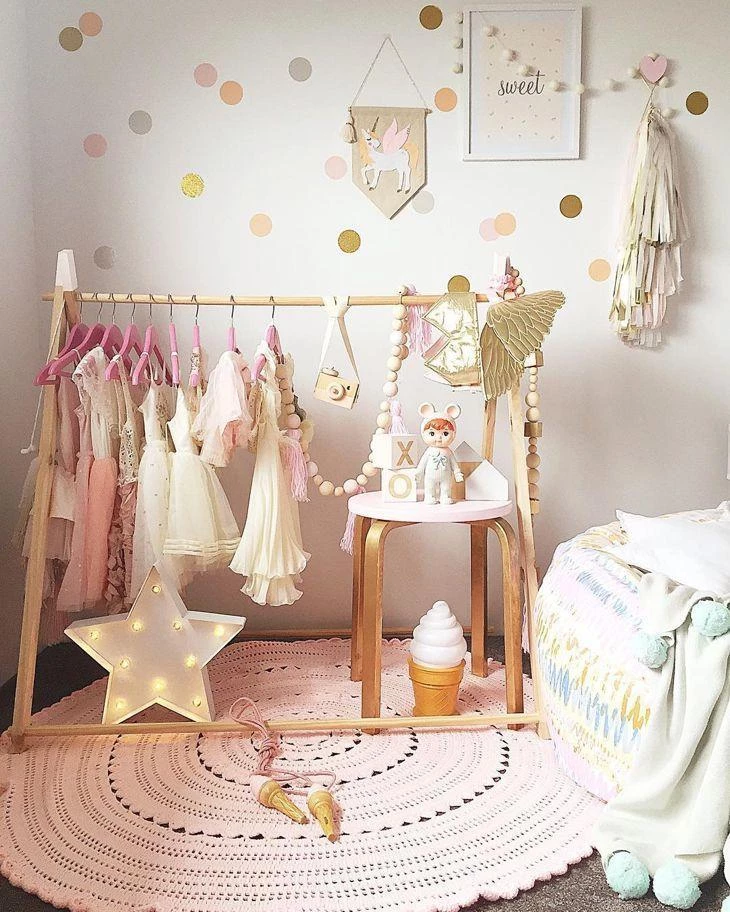
9. use non-slip mats
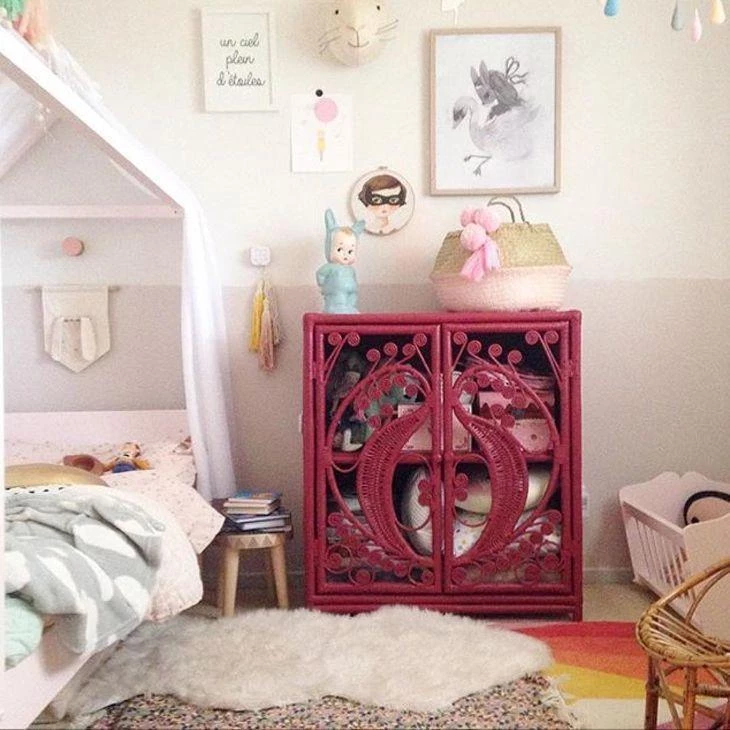
10. little lights make the environment cozier and help with reading time
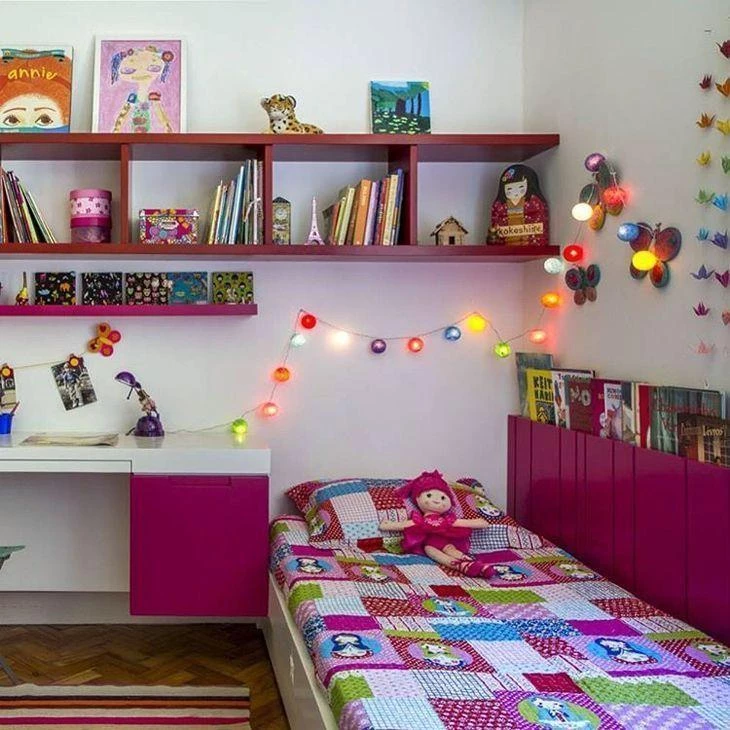
11. the head of the bed is a large panel, which accommodates books and toys
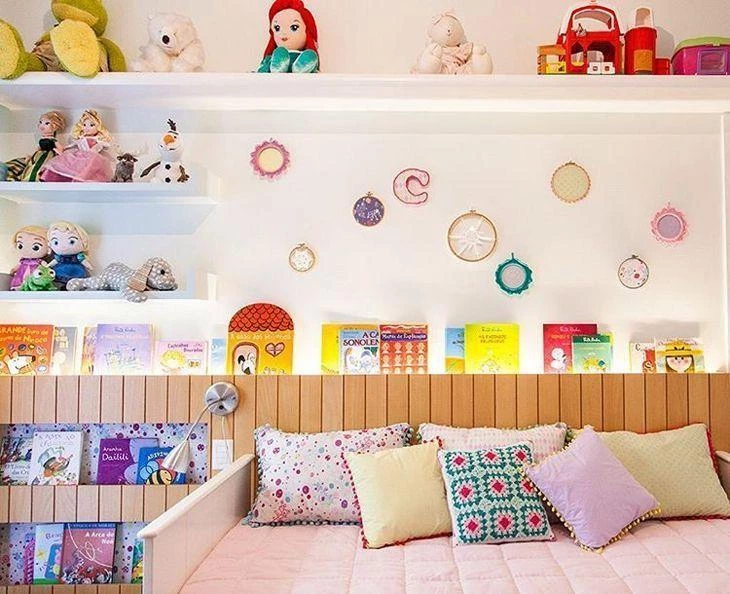
12. the mattress on the floor (or almost) prevents falls
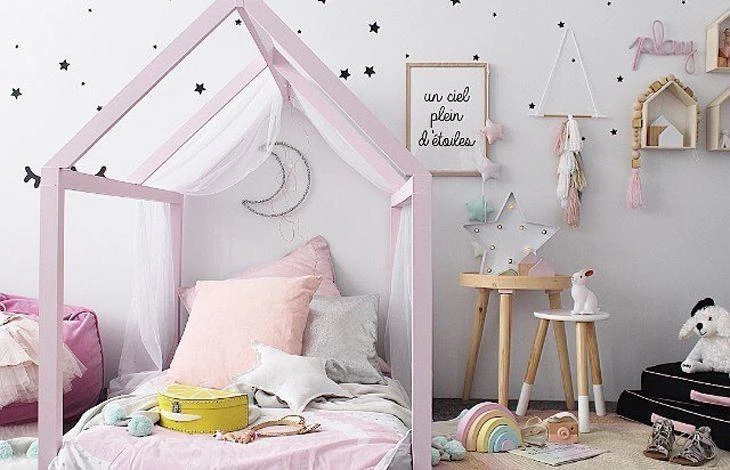
13. at the window, black wall of "blackboard" paint
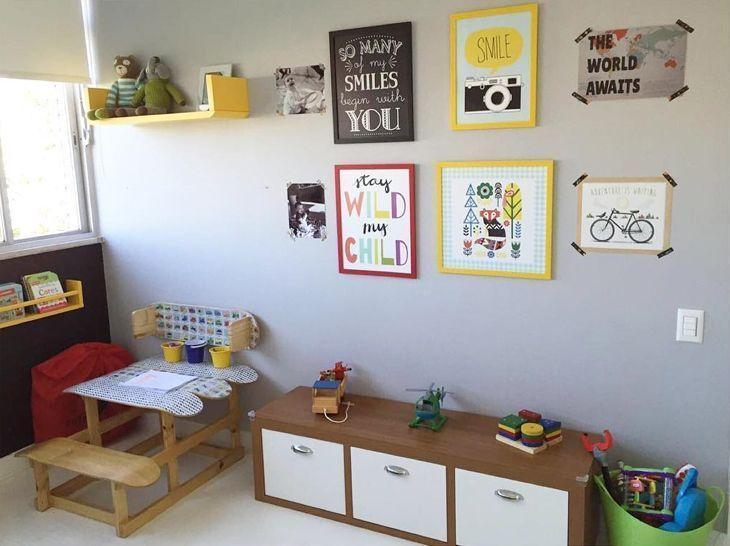
14. the reading corner is cozy and even has a mirror
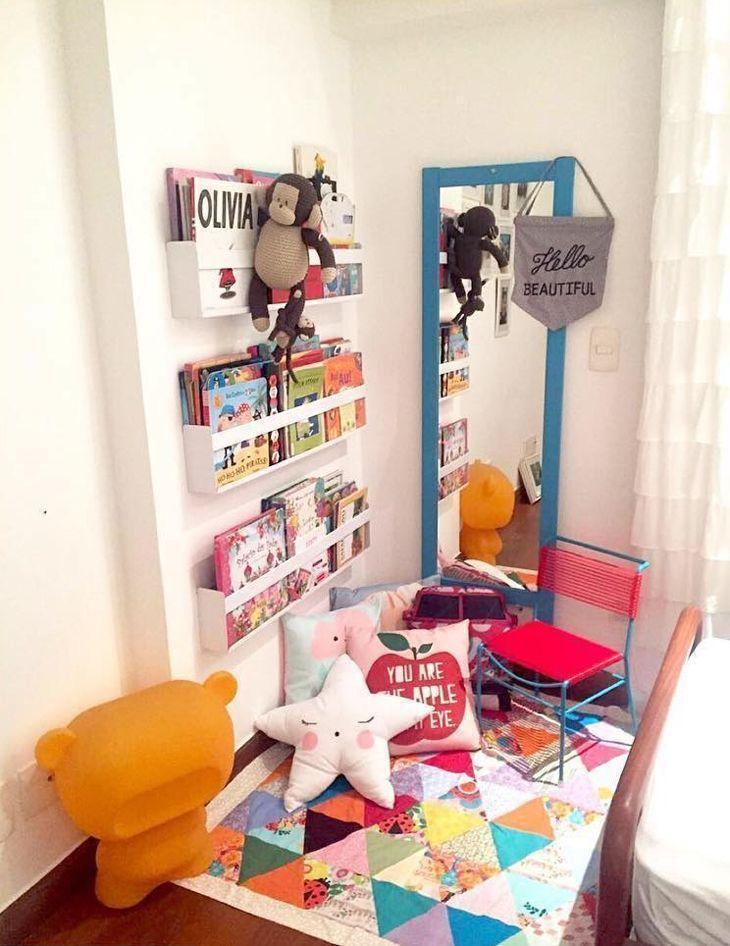
15. another themed room. the unisex theme makes it easier to find props for the decoration
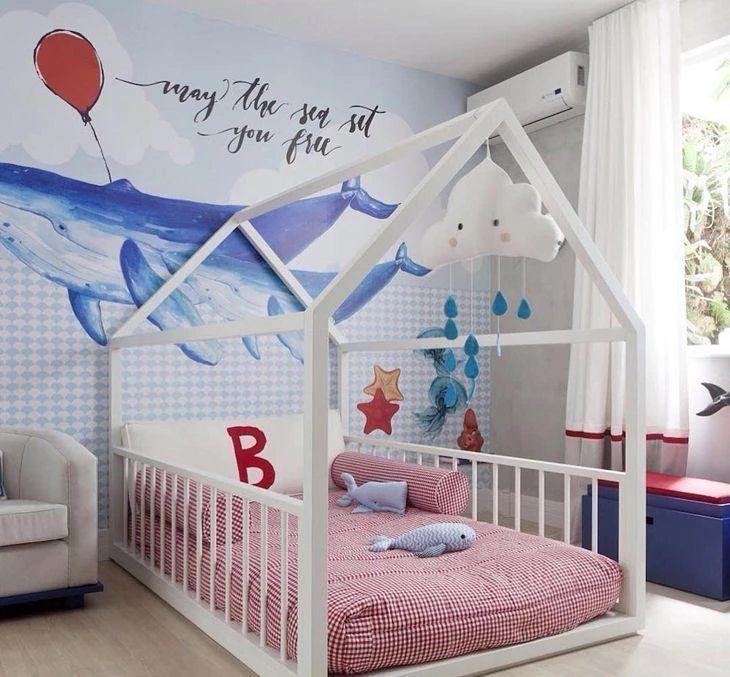
16. a couple of small explorers share this room
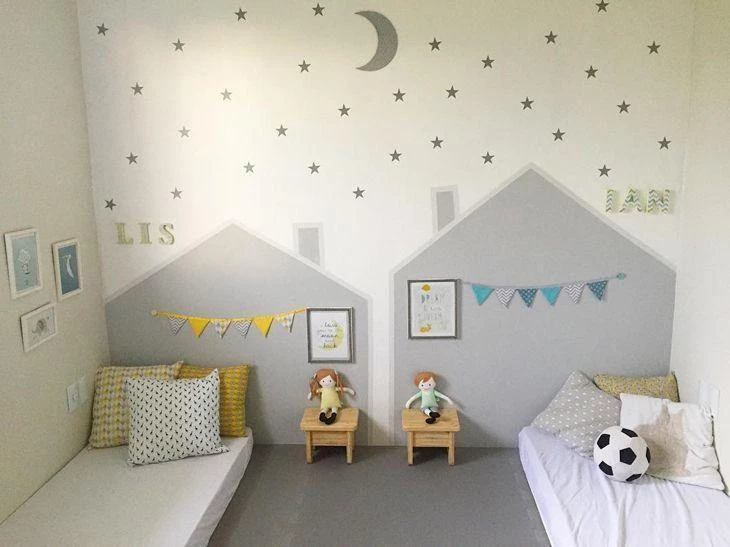
17. cottage-shaped beds can be painted to match the room's color palette
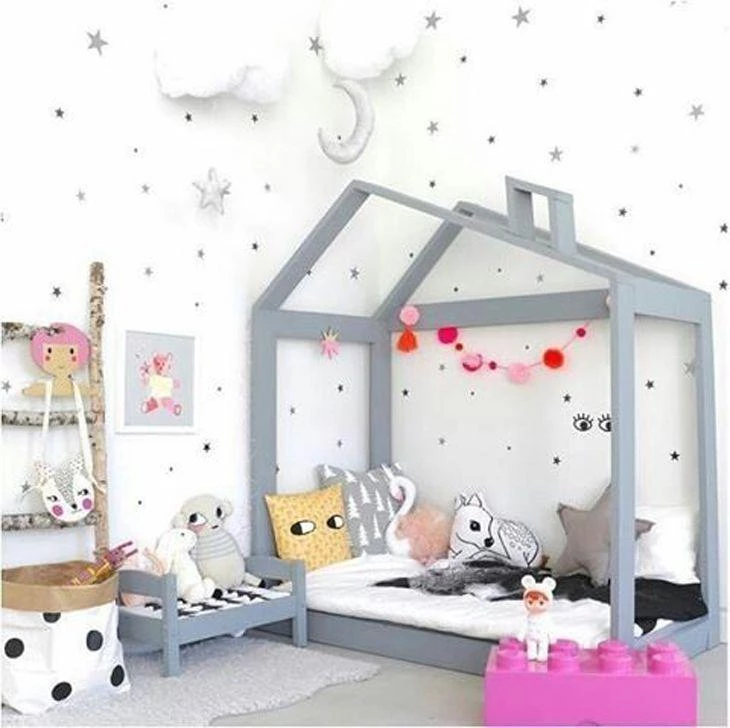
18. rubberized mats do not slip and prevent the child from having direct contact with the floor
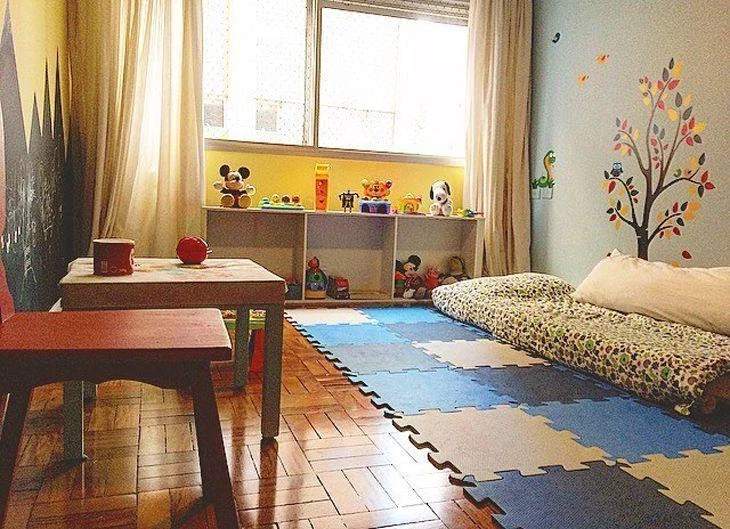
19. how about a painting or a sticker on the wall?
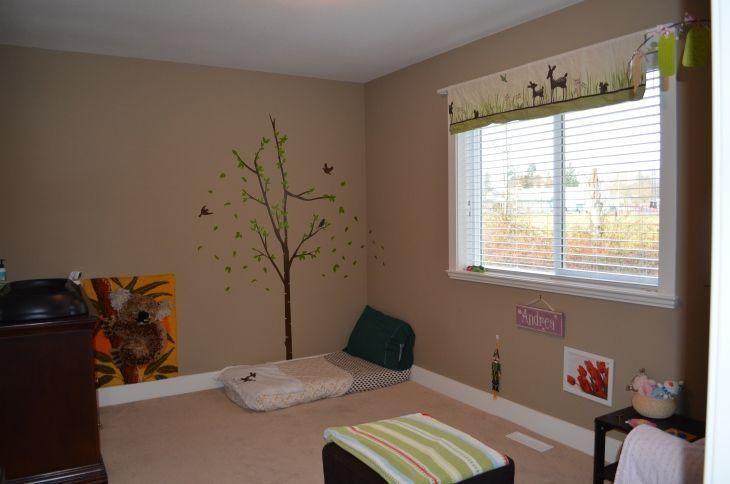
20. the niches follow the entire length of the wall
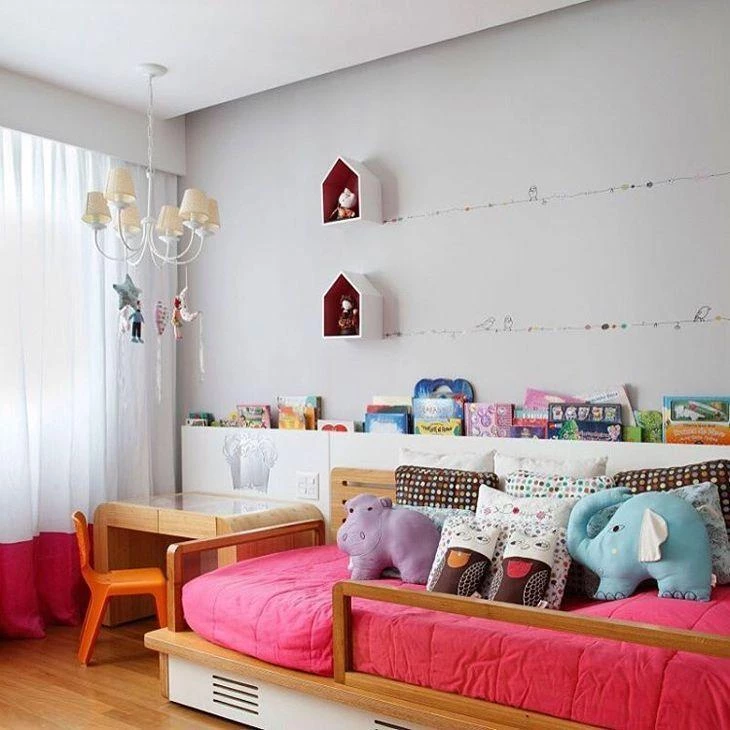
21. a giant whiteboard is every child's dream (and many adults' too!)
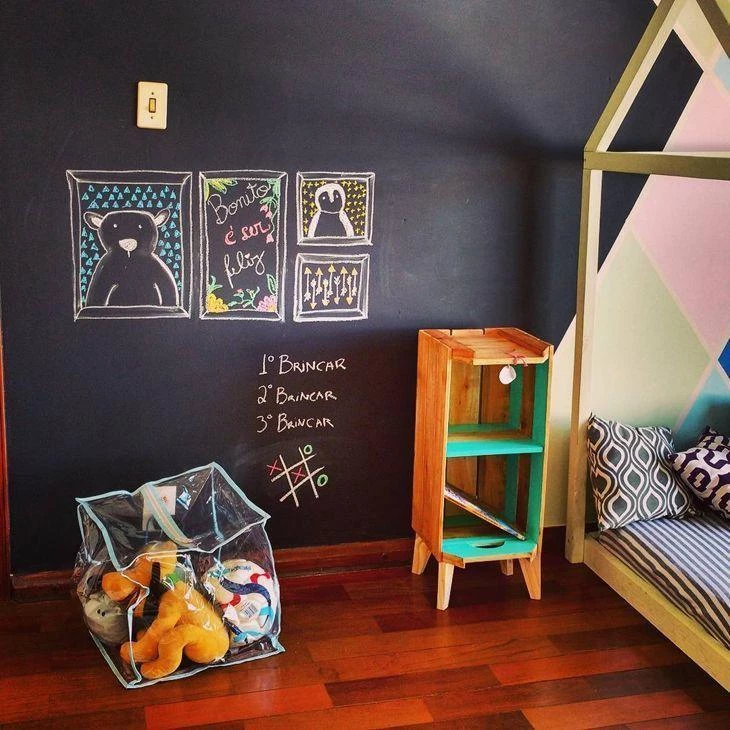
22. take advantage of the heightened creativity and display the art of the artists in the house
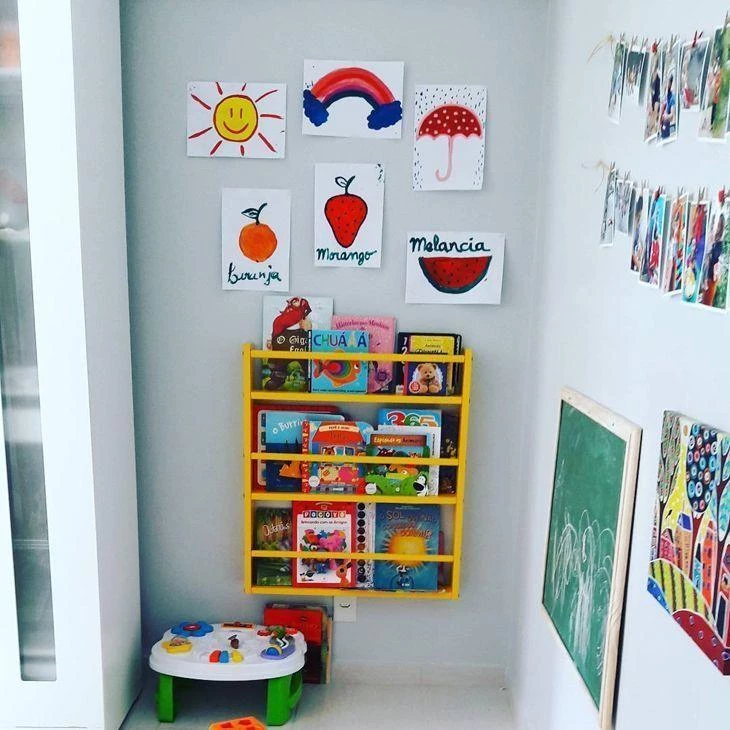
23. it is possible to use the Montessori method in the bedroom, regardless of the size of the room

24. if it is possible, create a mini-toy room in some corner of the room
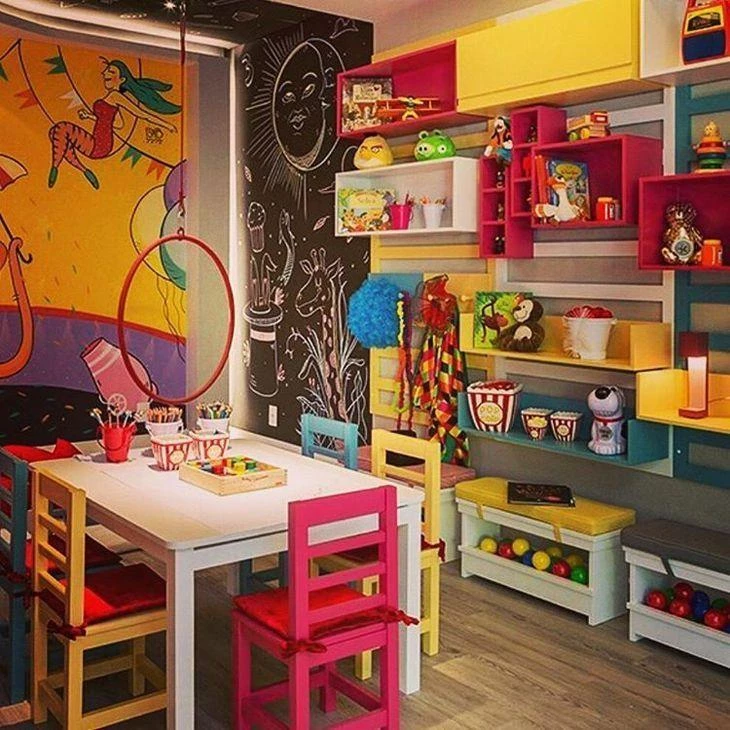
25. fantasy carrier with wheels, to play freely in the room
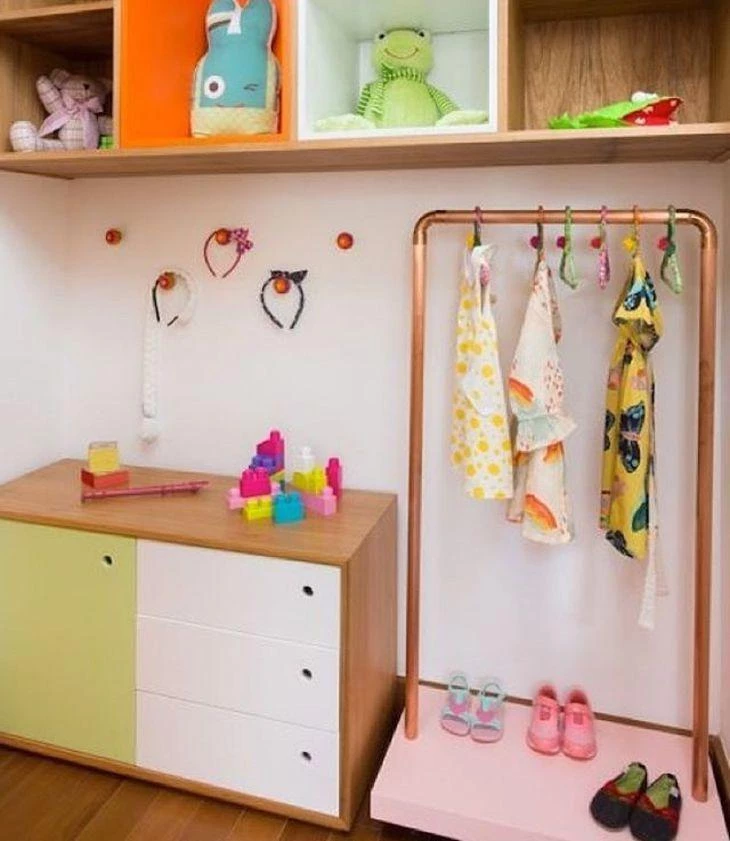
26. the panel structure allows you to move the shelves around and make them higher or lower, according to your needs
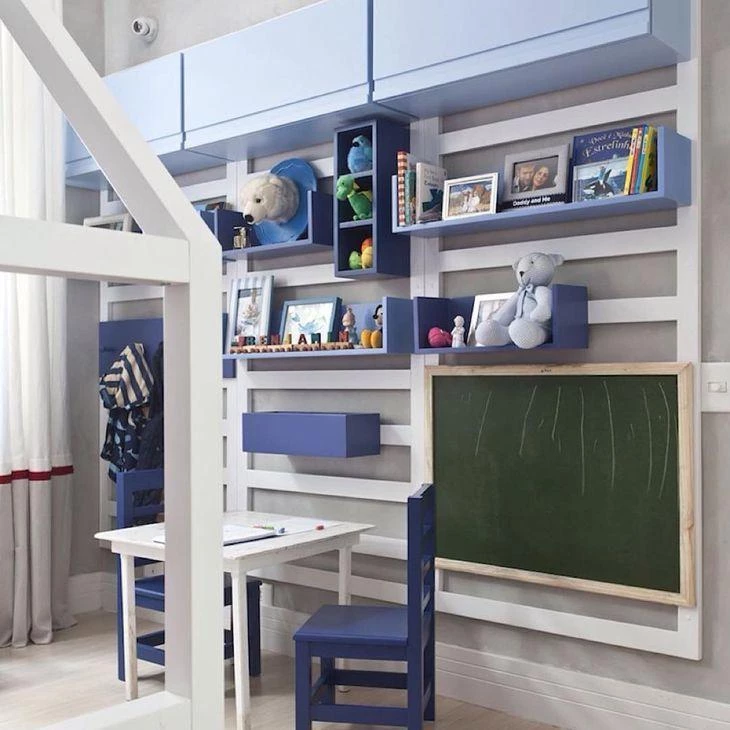
27. a wall with maps, for a little one who wants to know the world
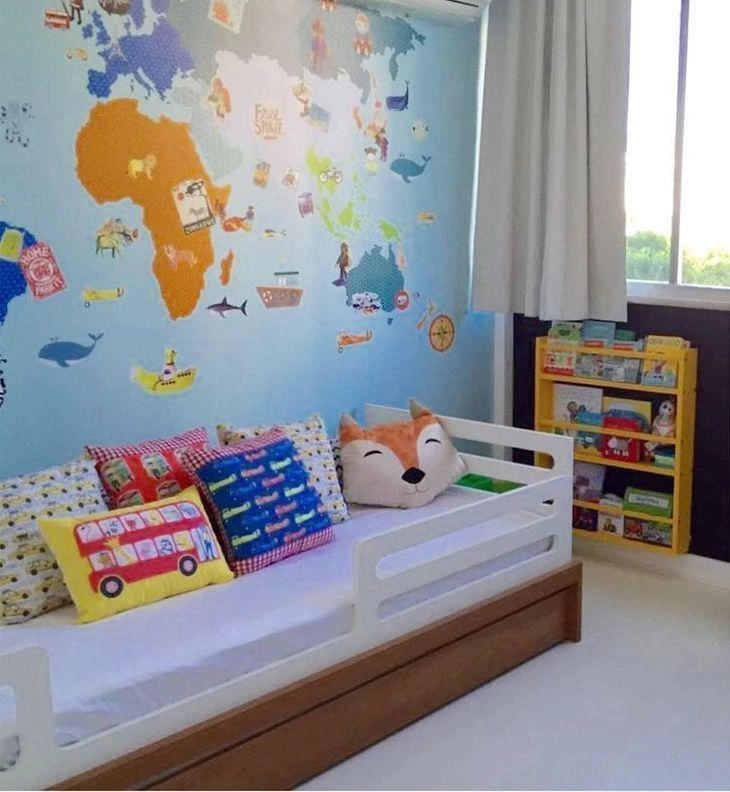
28. for the shared room, mezzanine for the beds and an iron bar for sliding down!
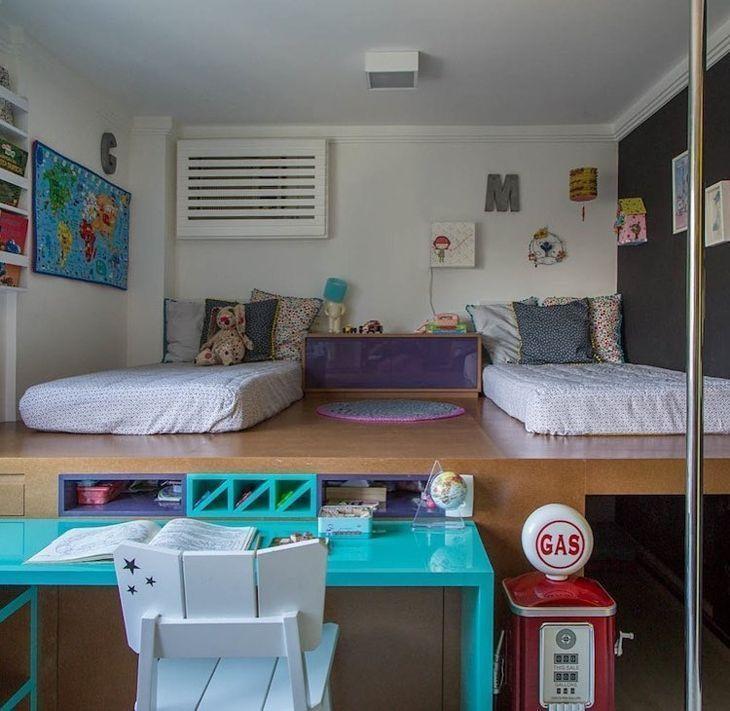
29. strong colors make the environment cheerful
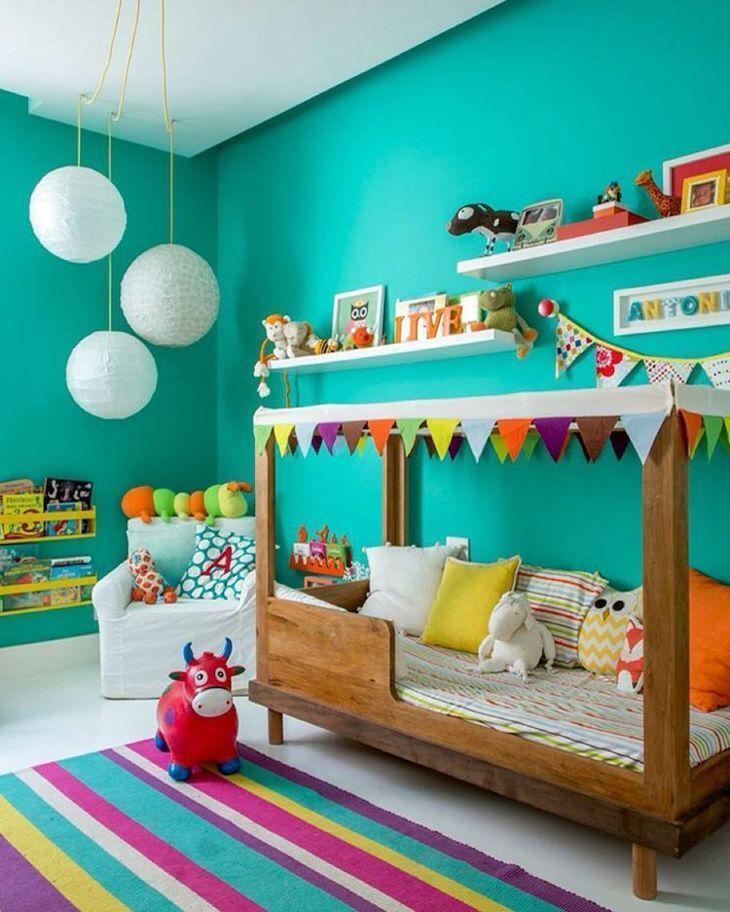
30. "Camping center": small cloth tents (or huts) are the joy of the kids
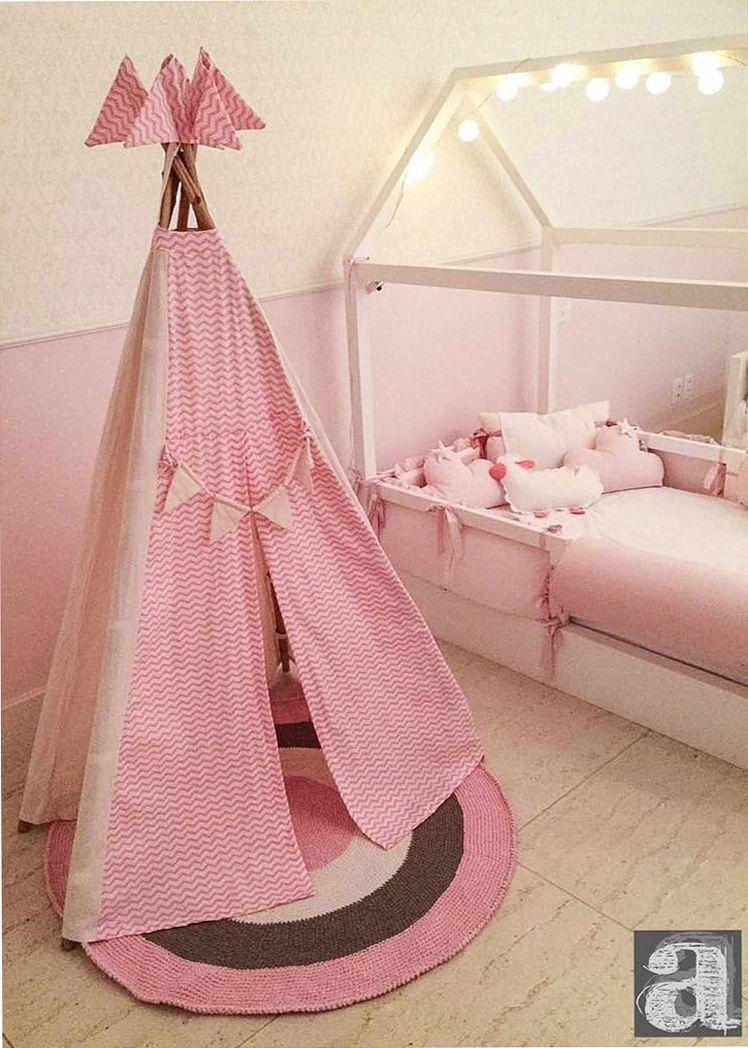
31. a small office for someone who dreams big fun projects
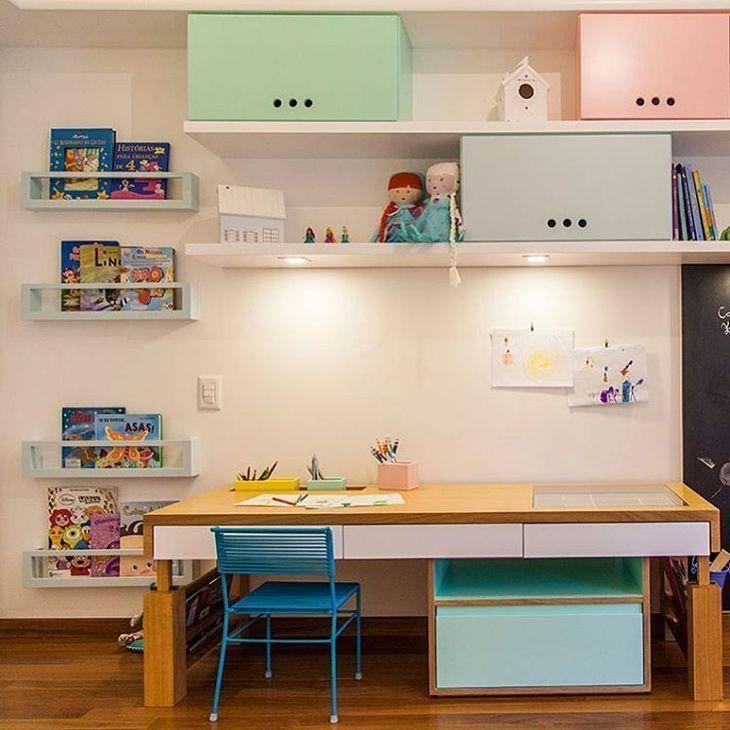
32. toys always within reach
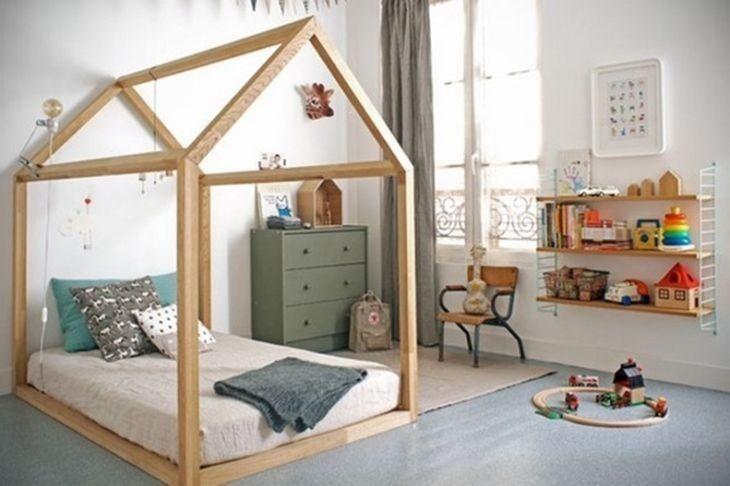
33. the panel allows the child to get out of bed and get in touch with toys
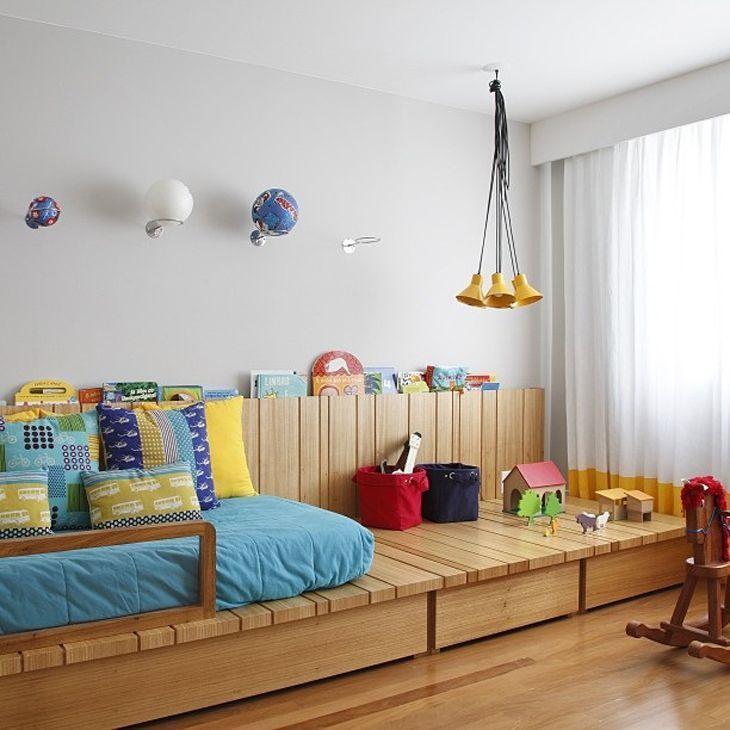
34. a mini closet allows children to choose what they leave the house with
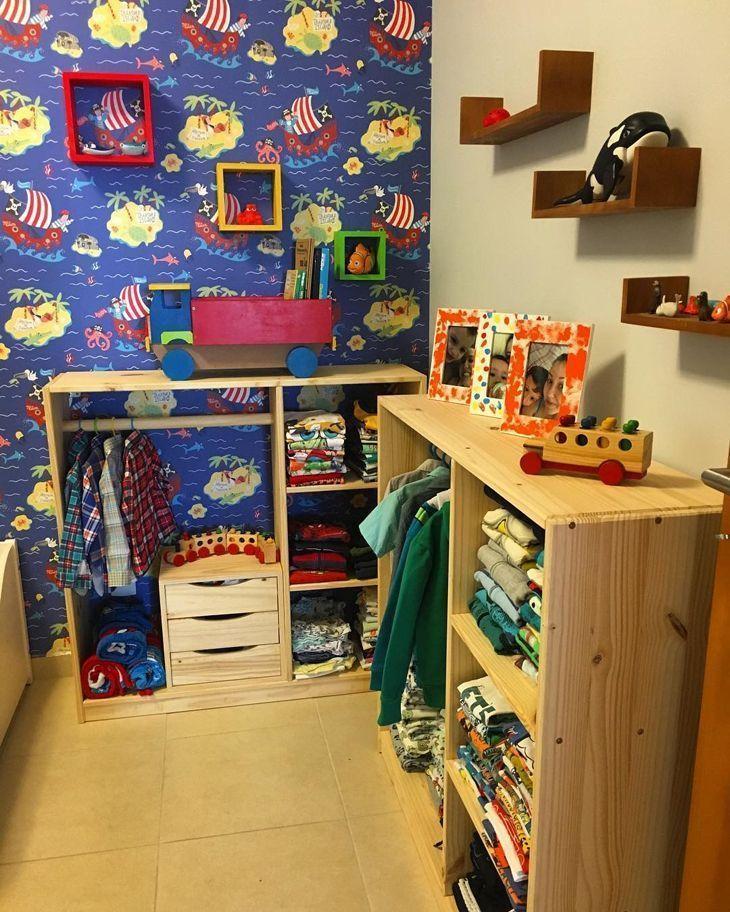
35. invest in furniture that breaks out of the ordinary, like this round bench, perfect for hiding with a nice book
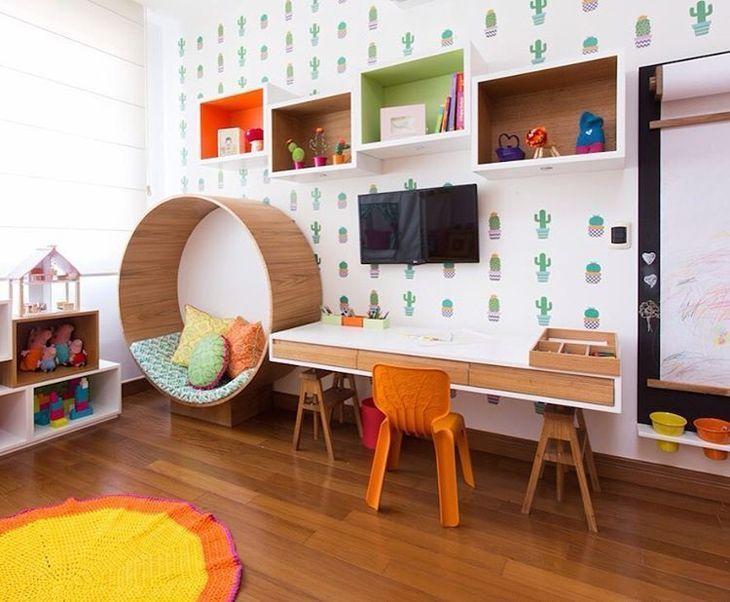
36 If your daughter dreams of being Elsa, bring the colors of her world into your princess's room
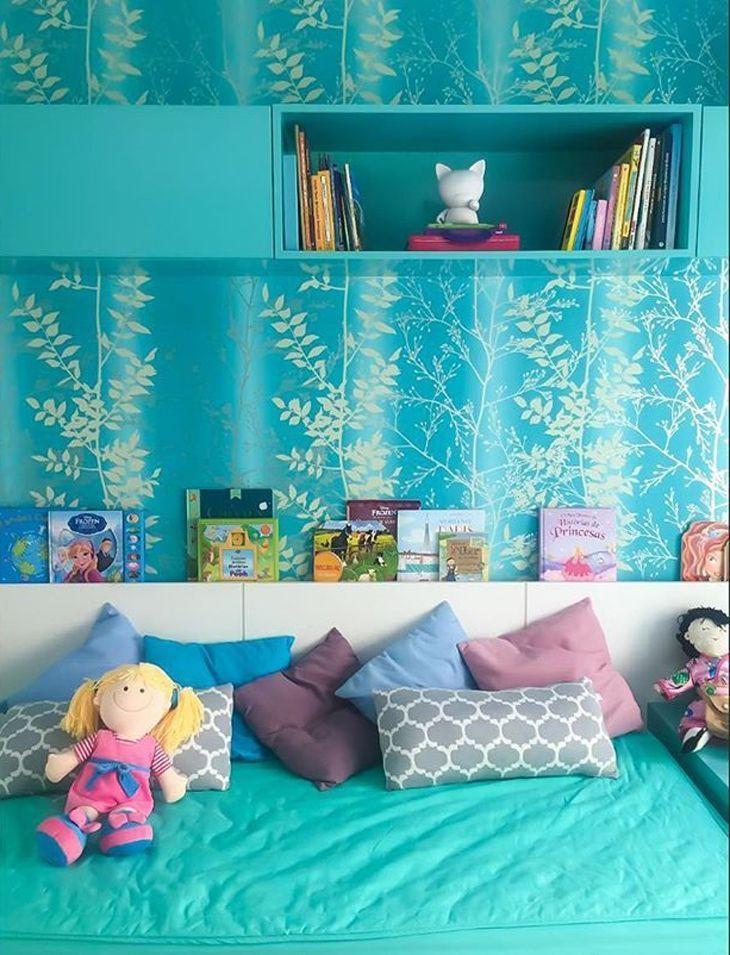
37. leave toys at the children's disposal

38. small niches and organizing bags are ideal for children to learn, from an early age, that everything has its own place
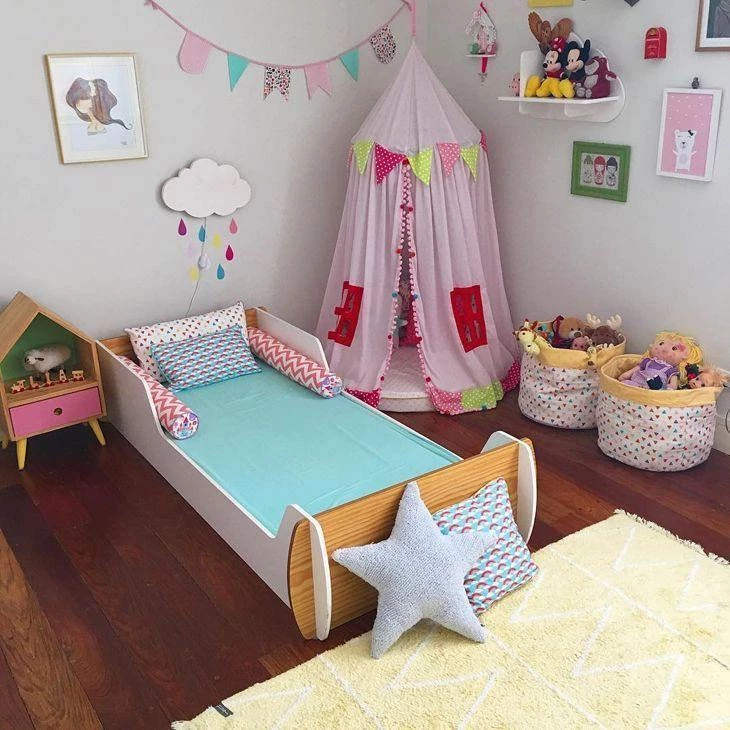
39 The stickers on the wall and the rug are reminiscent of grass, which children love
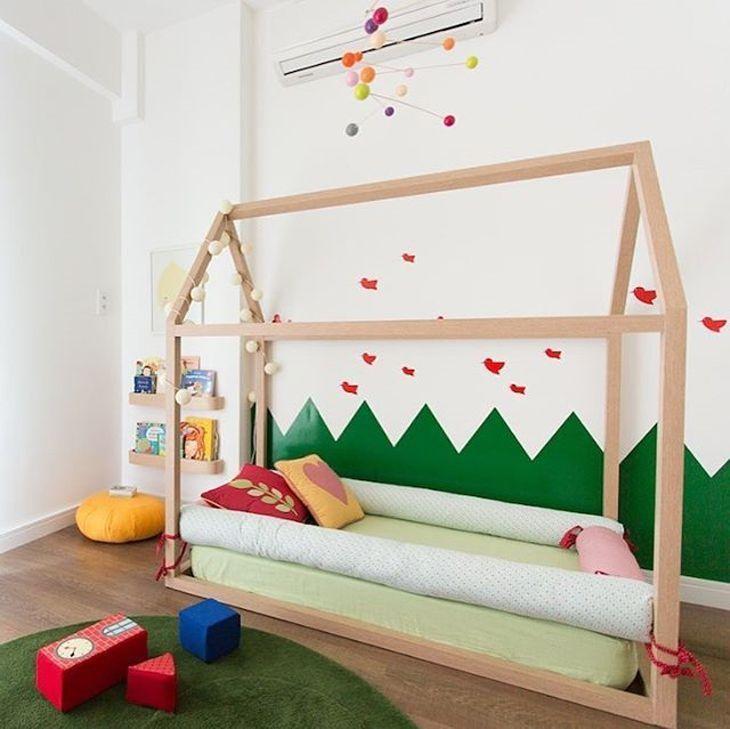
40 - Pencils, chalk, blackboards, books, toys... Make the décor great!
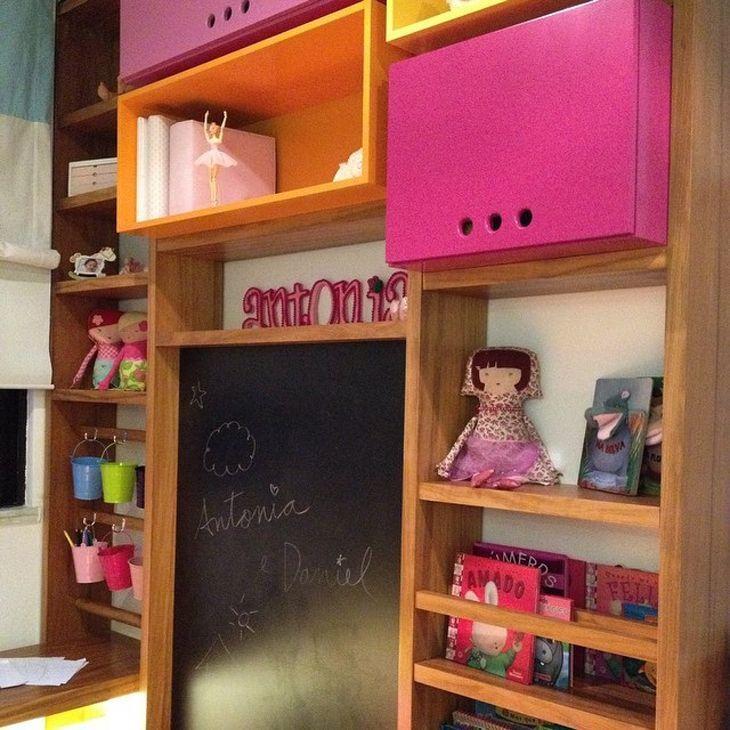
41. sweet dreams for the owner of this enchanted room
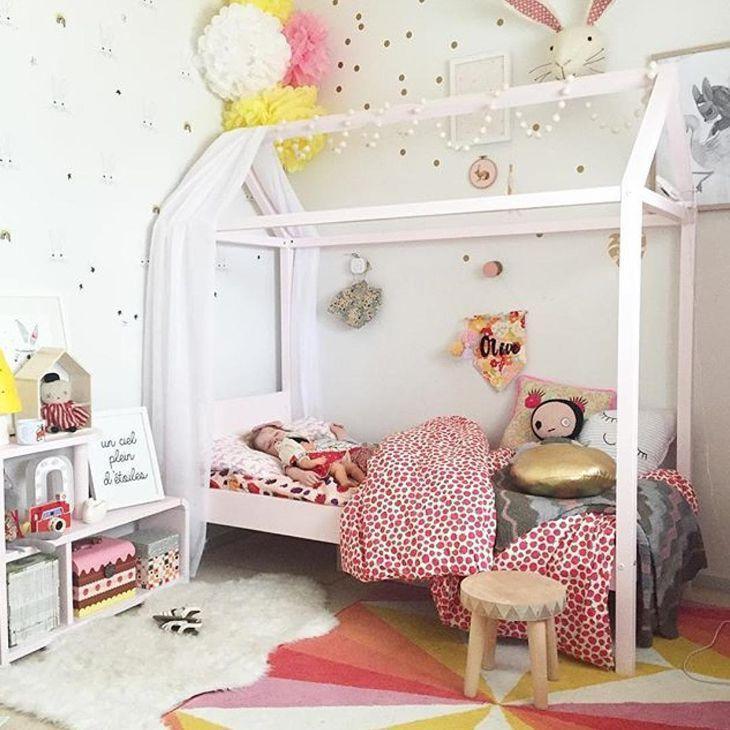
42) What child won't be happy to know that he can unleash his imagination and draw on the wall? Use a roll of paper or specific paint for this purpose
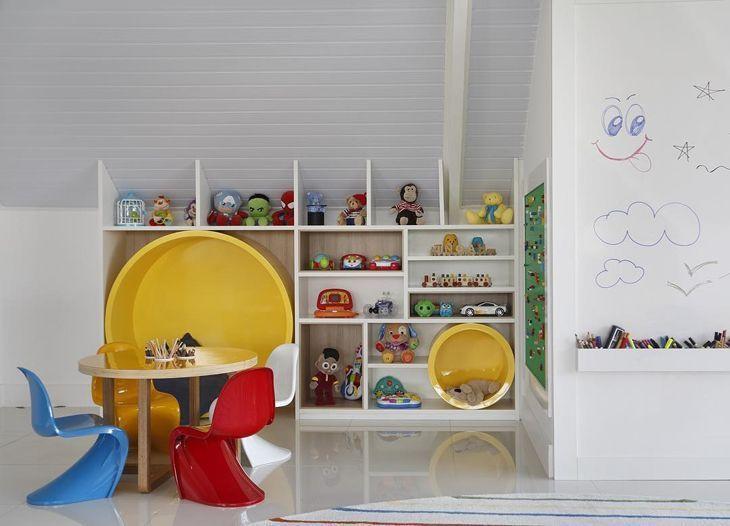
43 A little room straight from the pages of a fairy tale
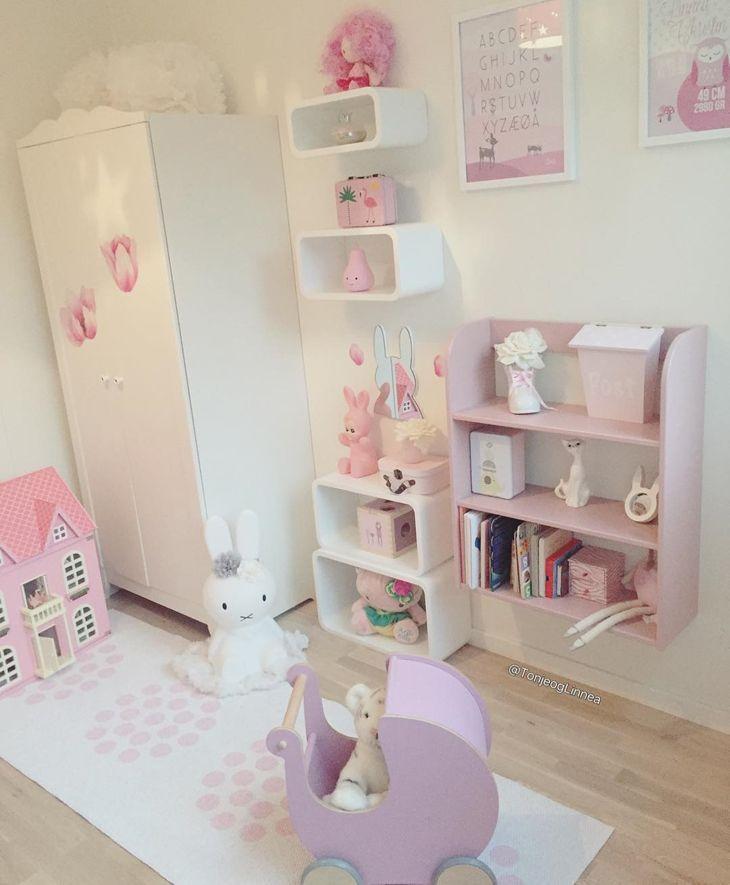
44 Different pillows can help kids learn sizes, colors, and shapes - and make the room look great!
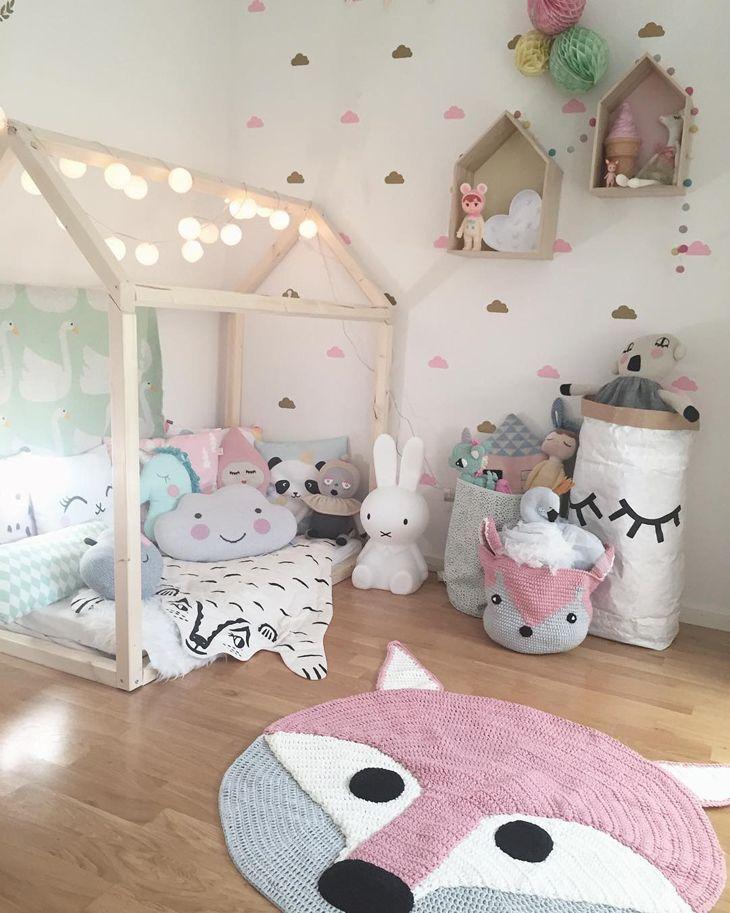
45. bars help to steady the little legs for the first unaided steps: it is the baby's independence with security
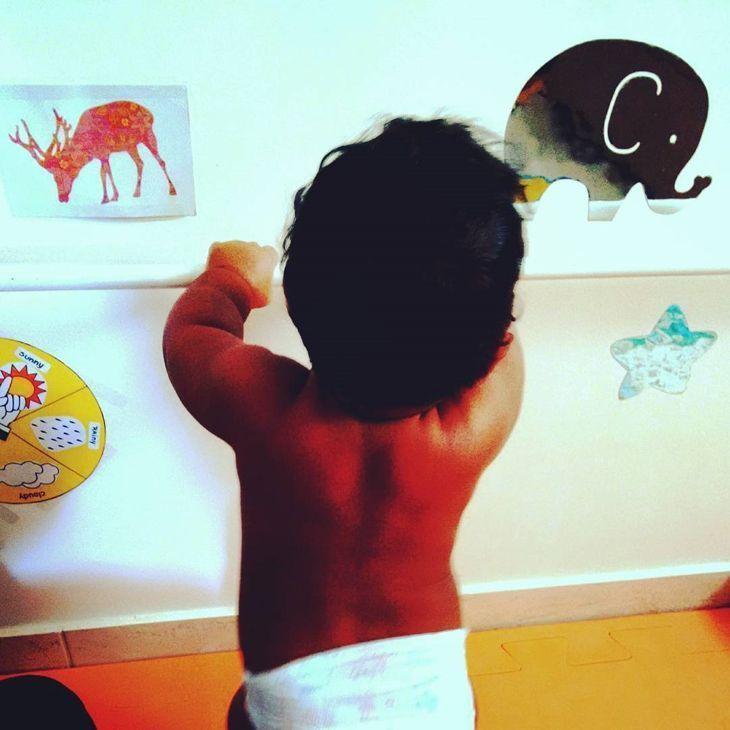
According to Dr. Reinaldo, self-education is an innate ability in human beings, which due to adult insecurity ends up being pruned almost entirely in childhood. "When this opportunity is offered, the child's nature of being a trailblazer to absorb the world around him is easily observed. The child then feels free to explore, investigate, and research", he concludes.
The Montessori room provides the right environment for this, and the most interesting objects so that the child can develop by its own efforts, at its own pace and according to its interests. And to decorate your son or daughter's room with a lot of love and fun, see also ideas for shelves for children's rooms.


